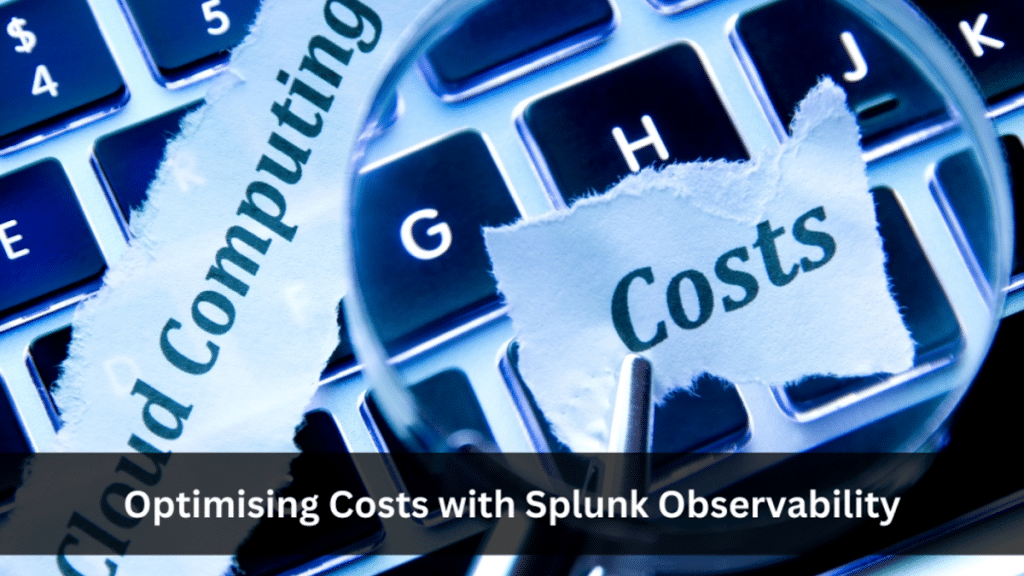The modern digital landscape has forced many businesses to bank on complex IT infrastructure and applications to remain competitive. This reliance often comes at a very hefty cost. While cloud computing can provide flexibility and scalability, it can quickly spiral out of control if not monitored properly, bringing in the observability aspect. AI-powered observability services by Splunk in Australia provide the insights needed to understand system performance, identify inefficiencies, optimise resource allocation, and, most importantly, control costs. These solutions cater to businesses in Australia looking to reduce IT spending without compromising performance.
Unleashing cost optimisation with Splunk observability
Splunk Observability is not just about monitoring; instead, it’s about understanding. It gives you a single view of your IT landscape, from infrastructure to applications, and shows you the complex relationships between the various components. This is itself the very foundation of effective cost optimisation. You will understand how your systems behave; it helps you identify bottlenecks, optimise resource utilisation, and find issues before they affect performance and your bottom line. It means moving away from reactive firefighting to proactive optimisation.
Monitor and reduce cloud infrastructure costs
Cloud infrastructure costs can spiral out of control if not properly monitored. Splunk Observability gives you granular insight into cloud spend, showing you where you are overspending.
- Resource utilisation: CPU, memory, and storage usage across your cloud instances. Find underutilised resources and right-size your deployments to avoid unnecessary costs.
- Cost allocation: Understand how your cloud spending is distributed across various teams, applications, and projects. This will give you complete insight into cost accountability and budget management.
- Anomaly detection: Splunk will automatically detect spikes in resource consumption and can alert one about impending issues that may lead to unexpected cost overruns.
- Integrate cloud provider cost explorer: Integrate Splunk with cloud provider cost management tools for holistic visibility into your cloud spend.
Enhance application performance, reduce expenditures
Performance and cost are complementary to an application. Sluggish applications result in lost revenues apart from dissatisfaction of the customer base. Splunk Observability helps optimise application performance and leads to outstanding cost savings thereafter.
- Performance bottlenecks: Detect and fix performance bottlenecks, which dampen user experiences and waste unwanted resources.
- Latency analysis: Identify the exact causes of application latency issues to make effective code and infrastructure changes for fast response times.
- Error rate reduction: Reducing the number of application errors will reduce costly troubleshooting and remediation efforts.
- Improved user experience: A faster and more reliable application equates to happier customers and revenue growth.
Leverage analytics for data-driven cost control
Splunk Observability provides powerful data analytics capabilities that allow you to make data-driven decisions about cost optimisation.
- Trend analysis: Observe resource usage and cost trends over time to comprehend spending habits. By looking at historical data, you can make more informed decisions about areas where you can cut unnecessary expenses and improve cost efficiency.
- Forecasting: Use predictive analytics to forecast future resource demands and optimise cloud spending in advance. This ensures you allocate resources effectively and avoid unexpected budget overruns.
- Custom dashboards: Create personalised dashboards to visualise key cost metrics, track spending trends, and monitor progress toward optimisation goals in real-time.
- Reporting: Generate detailed reports on cost trends and resource utilisation, enabling you to share insights with stakeholders and justify optimisation strategies.
Best practices for cost optimisation with Splunk
It is essential to implement effectively to maximise the cost optimisation potential of Splunk Observability. Here are some best practices:
- Establish clear objectives: Set SMART goals for your cost optimisation initiatives. A clear purpose will guide decision-making and ensure alignment of business priorities.
- Identify key metrics: Determine the metrics most important to track, such as resource utilisation, performance efficiency, and cost trends. These metrics will measure the effectiveness of your optimisation strategies.
- Monitor and alert: Provide real-time monitoring with alerts to autonomously identify waste, overruns, or deteriorating performance that can quickly become out of hand.
- Automate remediation: Automate dynamically scaling resources due to demand and eliminating waste through bridging efficiency gaps without intervention.
- Review regularly—optimise: Cloud spending, workloads, and system performance are continuously reviewed for new opportunities for cost savings.
- Training and enablement: This enables the team with the necessary skills and knowledge to better utilise Splunk Observability, which, in turn, can make meaning from data insights and set best practices in motion.
Conclusion: Maximising value, Minimising costs
Today, cost control is one of the significant challenges faced by performance-critical IT organisations. Splunk Observability equips them to face it head-on. Splunk gives profound insights into IT infrastructure and application performance to drive data-informed decisions toward better resource optimisation, reduced cloud spend, and enhanced application performance. It is not about just cutting the cost; instead, it’s all about maximising value from your investments in IT. Moving toward a proactive approach to observability holds the key to sustainable cost optimisation and staying ahead of the curve in today’s digital economy. If followed, some of the best practices described above will let organisations unlock significant cost savings with Splunk Observability and drive business growth.
